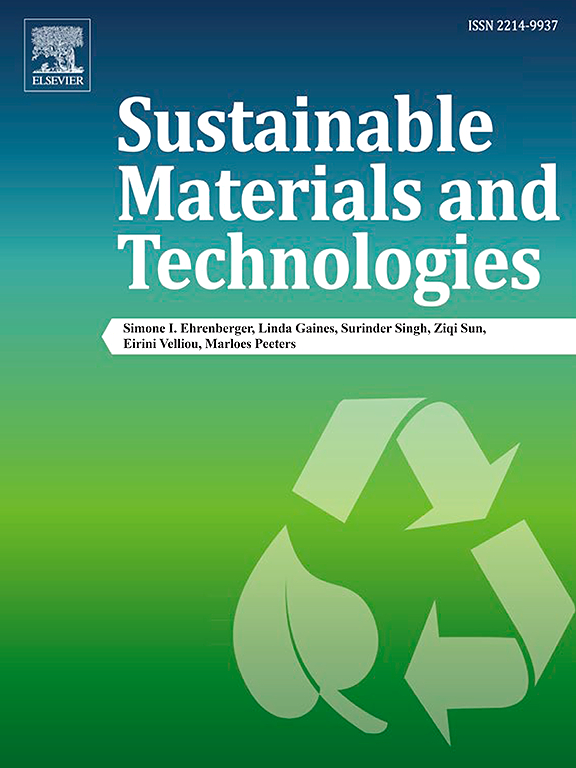Sustainable recovery of spent ternary cathode materials via wasted asphalt pyrolysis in closed-loop recycling
IF 8.6
2区 工程技术
Q1 ENERGY & FUELS
引用次数: 0
Abstract
With the continuous development of the lithium-ion battery (LIB) industry, the number of retired power batteries has been increased rapidly. The ternary cathode materials from spent batteries are rich in valuable elements such as lithium, nickel, and cobalt. It is of great significance to extract and reuse those metal elements. Herein, we proposed a favorable method for disintegrating spent cathode materials under the reductive gas obtained by pyrolysis of spent asphalt at a low temperature of 500 °C. The structure of the spent ternary material was completely decomposed under a mild condition, in which 97.3 wt% of Li was well released to form lithium carbonate. The treated transition-metal salt solution was employed to prepare a precursor through a simple hydrothermal process, and a ternary cathode material (NCM 811) with superior electrochemical performance was achieved. The impact on the economy and environment under this procedure was estimated by the Everbatt model. The greenhouse gas emission in this process was only 50.1 % of that from the pyrometallurgical treatment and 64.5 % of that in the hydrometallurgical process. The proposed green recycling strategy demonstrated the enormous potential for high value-added closed-loop recycling of spent ternary cathode materials.

废沥青热解闭环循环可持续回收废三元正极材料
随着锂离子电池(LIB)产业的不断发展,退役动力电池的数量迅速增加。废旧电池中的三元正极材料富含锂、镍、钴等有价元素。提取和再利用这些金属元素意义重大。在此,我们提出了一种在 500 ℃ 低温热解废沥青获得的还原性气体下分解废正极材料的有效方法。在温和的条件下,废三元材料的结构被完全分解,其中 97.3 wt% 的锂被很好地释放出来,形成碳酸锂。利用处理后的过渡金属盐溶液,通过简单的水热法制备前驱体,得到了电化学性能优异的三元正极材料(NCM 811)。Everbatt 模型估算了该工艺对经济和环境的影响。该工艺的温室气体排放量仅为火法冶金处理的 50.1%,为湿法冶金工艺的 64.5%。所提出的绿色回收战略表明,三元阴极废料的高附加值闭环回收利用潜力巨大。
本文章由计算机程序翻译,如有差异,请以英文原文为准。
求助全文
约1分钟内获得全文
求助全文
来源期刊

Sustainable Materials and Technologies
Energy-Renewable Energy, Sustainability and the Environment
CiteScore
13.40
自引率
4.20%
发文量
158
审稿时长
45 days
期刊介绍:
Sustainable Materials and Technologies (SM&T), an international, cross-disciplinary, fully open access journal published by Elsevier, focuses on original full-length research articles and reviews. It covers applied or fundamental science of nano-, micro-, meso-, and macro-scale aspects of materials and technologies for sustainable development. SM&T gives special attention to contributions that bridge the knowledge gap between materials and system designs.
 求助内容:
求助内容: 应助结果提醒方式:
应助结果提醒方式:


